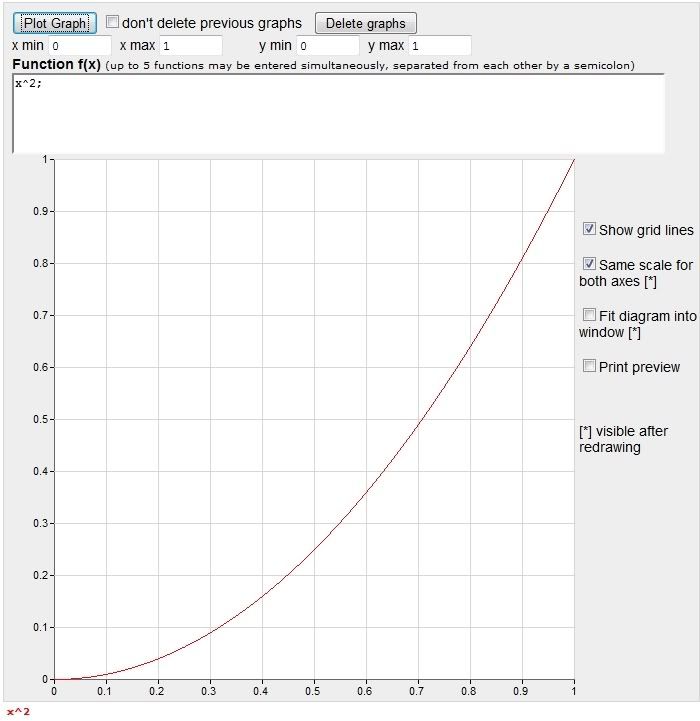Little nerdy are we, Bubi? 
I needed something to do when I was supposed to be learning about graphing polynomials... I hate math

Well that's not so much true I just can't stand doing problem after problem of a concept I can't apply to anything.
Motherland: Nice right-up, I agree a squared approach might be good in many areas.
I am also impressed how you actually read and thought about what I wrote in the context it was meant. You took the leap from a vision of what you see in your head to thinking about what the real out come in the arena will be.
HiTech
Thank you very much.... it's very easy to say 'I think xyz would be cool' and not think about what the actual repercussions would be... it's fun, too though

I really think that a damage system that depends on a formula as opposed to meeting thresholds would improve the game experience, at least for me, so I decided to put some thought into it.
Motherland,
Something to be clear should also be that a wing 25% of the way to failure is not a wing generating 75% of the lift the wing generated when it was at 100%.
For ease I will use arbitrary numbers. Let's set the complete wing failure at 50% lift. Meaning that just prior to the wing falling off at your 0 G point the wing would still be producing 50% of the healthy wing's lift. Under that consideration a wing that had taken 25% of the damage to the failure point would be down 12.5% lift to 87.5%, not 25% lift to 75% lift.
I suspect the lift generated at the failure point would actually be higher, probably much higher, than 50% though. A more realistic number might be 75%, so a 25% loss of lift from a wing would be the worst case scenario.
I never intended for the calculation of lift and the structural integrity of the wing to be based on the same function. I'll try to make it more clear...
OK so now I'm going to try to verbalize some more of this. The graphs will help but even with that I'm very bad at explaining or comprehending any kind of mathematical jargon especially through text (and especially through the terrible format in which you have to write stuff...) so bare with me.
I'm going to use these formulas. (just examples but they should give you a better idea of what I mean, and I can use them to give better situational exmples)
First I'm going to try to explain how the graphs are set up and my thought process.
The graph goes from 0 to 1 on both the y and x axis. The values of the x axis represent the percentage of total damage points before the wing fails at 0G's. So 0 is no damage points, .25 is 25% of the possible damage points, .7354 is 73.54% of possible damage points, etc. The y axis represents whatever you're trying to get, structural integrity of the wing, drag produced, lift produced. This is also expressed in % from the decimal although the meaning of the % will vary.
In examples the x axis representing percentage of the total damage points before the wing fails at 0G's will simply be called damage.
Structural Integrity- y represents the the percentage of G's the wing can withstand compared with a fresh wing.
y=x^2

Example Values
5% damage means 99.75% structural integrity.
10% damage means 99% structural integrity.
25% damage means 93.75% structural integrity.
50% damage means 75% structural integrity.
75% damage means 43.75% structural integrity.
80% damage means 36% structural integrity.
90% damage means 19% structural integrity.
95% damage means 9.75% structural integrity.
As you can see small amounts of damage don't really do much, however once you pass 50% damage you really start to hurt, and hurt quick. This IMO would reflect the real world where, once something is already weakened, you need less and less additional force to break it.
Drag could probably be defined in a similar way if it were factored in- y represents the percentage of the wings drag that would be added to the normal 'clean' wings drag.
y=x^2

5% damage means 100.0025% drag.
10% damage means 101% drag.
25% damage means 106.25% drag
50% damage means 125% drag.
75% damage means 156.25% drag.
80% damage means 164% drag.
90% damage means 181% drag.
95% damage means 191.25% drag.
Again starts out small and then gets very disruptive. I think this is especially intuitive for drag. It also shows that how many G's you can sustain will be only part of your worries. This may need to be throttled back a bit like lift though.
Lift uses a different formula in my example. Still essentially the same but with another part, so that the wing always produces lift while attached to the airplane. Lift is like structural integrity where y is subtracted from the amount of lift a healthy wing puts out. Structural integrity function is included for perspective.
y=(9/10)x^2

This time I'll start at 25% and include SI figures for perspective.
25% damage means 94.3% lift and 93.75% structural integrity.
50% damage means 77.75% lift and 75% structural integrity.
75% damage means 49.375% lift and 43.75% structural integrity.
80% damage means 42.4% lift and 36% structural integrity.
90% damage means 27.1% lift and 19% structural integrity.
(practical breaking point is somewhere in here)
95% damage means 18.775% lift and 9.75% structural integrity.
I have work to do so I'll explain how I see this affecting gameplay and 'real world' situations later.